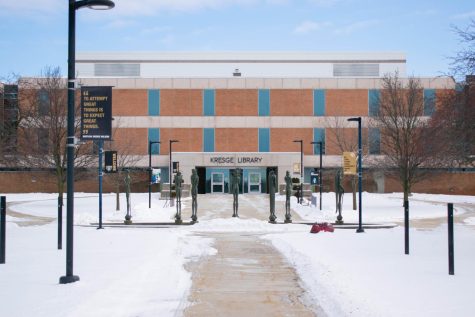Looking Back: Cable TV comes to the residence halls
Cable television is a service that residents living in Housing on campus are all entitled to today. Whether residents use their box to follow the news, keep up with March Madness, watch reruns of Rick and Morty at 3 a.m., or if it just collects dust on a wall, every resident living at Oakland University has access to cable TV if they want to use it.
However, in 1994, Oakland University’s residents did not have that right. To say that the concept of cable was new and scary to the University wouldn’t be too far off.
“In this era, technology is changing quickly,” said Paul Bissonette, the Vice President of Finance and Administration of the university at the time. “We want to be sure we’re doing the right thing for the residence halls before jumping into a long-term agreement.”
The idea of cable television being brought to campus was an exciting one for residents, and rumors regarding the installation were aplenty. Finally, in February 1995, the rumors were finally confirmed when OU announced a 10-year contract with TCI Cablevision to provide University Housing with cable.
“It’s about time,” said Judy Wiegand, the then president of residence Hall Council. “We’ve been working to get cable here for three years.”
TCI Cablevision would provide Housing with cable, with access to 90 channels in both the residence halls and the George Matthews Apartments. Students would have the option to pay for cable services for their new rooms.
With these new cable boxes, residents had easier access to shows that were available at the time. Older shows like Home Improvement, Seinfeld, Murphy Brown and 3rd Rock from the Sun, along with shows that still air like The Simpsons and Law and Order were suddenly available for residents to enjoy. At least, that was the plan.
By 1996, problems began to pop up regarding TCI and the cable system, one of which being the cost. For $49.90 a month ($78.49 today), residents would have access to TCI’s Basic Plus cable package. However, for $10.58 a month ($16.64 today), residents could get regular service through an antenna, and have access to local stations in the area.
“I won’t get it. The prices are ridiculous,” said Laurence Virden. “Why pay all that money for regular television?”
While price was a major issue in making the choice to use the new cable system, some residents did not even have the opportunity to make that choice. It was reported that workers from TCI would show up to install the cable and not do any work on it, instead sleeping in their cars or just leaving all together.
TCI Cablevision might not sound familiar to anyone reading this, mainly due to the fact that it was purchased in 1999 by AT&T. The cable television division of AT&T was eventually acquired by Comcast Corporation, which currently provides the university with cable.
Nowaday cable is included in the cost of the Housing contract for OU, and students have access to a bit more than 90 channels. However, with new conveniences like the internet and streaming services like Netflix, students may not see cable as worth the hastle.







